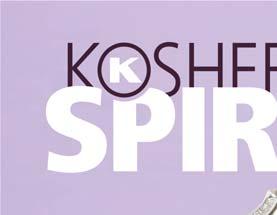



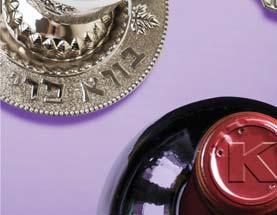



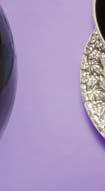
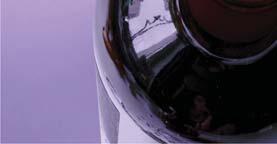



ה”ב CERTIFIED SOUL NUTRITION א ןוא רשכ חספ ןכעליירפ ח”עשת חספ PESACH 5778 Wishing You a Happy Pesach!
4 5 6 8 10 11 12 14 17 20 22 23
SHARE YOUR SPIRIT QUESTIONS FOR THE ~
HEALTHY SPIRIT
YOUR KOSHER KITCHEN: KASHERING COUNTERTOPS FOR PESACH by Rabbi Shlomo Klein
KEEPING KOSHER…WHEN VEGAN by Rabbi Yakov Teichman
THE “NEW” INSECT OBSESSION by Rabbi Sholom Kessleman
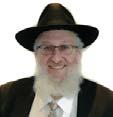
A CLOSER LOOK—YEAST by Rabbi Sholom Ber Hendel
TEACHING OUR KIDS TO PITCH IN! by Dina Fraenkel
MAKING PESACH FUN AGAIN by Duby Litvin
PESACH RECIPES
WHO’S BEHIND THE ~ Rabbi Osher Gutnick
CHASSIDIC INSIGHTS
SOUL NUTRITION by Rabbi Chaim Fogelman
Dear Reader,
Every year, around Pesach time, I wonder why almost all kosher consumers put in extra effort to ensure that the food they buy and consume has the most reliable kosher supervision. It’s a bit peculiar how, suddenly, most kosher consumers strive for the highest standards in kosher.
In truth, many people have the custom not to eat any processed foods that are not prepared in their own homes. Some even have the custom to be more stringent and refrain from eating foods that are kosher for Passover to the highest standard.
Not that I’m complaining. Here at the ~ upholding the highest standard is what we do day in and day out. After all, it is the kosher consumer that drives the food industry to adopt higher standards. But, why is it that every year, as Pesach comes around, kosher consumers once again put their best foot forward and only accept the highest standard of kosher?
Here are my thoughts and something interesting to consider:
It is well known in Chassidic circles that the holiday of Shavuos represents the marriage between Hashem and Am Yisroel. As a matter fact, many of the things that are done at a Jewish wedding, and particularly at the chuppah, are linked to the things that happened at Matan Torah. So, I was thinking, if the marriage took place on Shavuos, then the initial meeting between Hashem and Am Yisroel must have been a few weeks before that, at Pesach time. It make sense then; just as when two people meet for the first time they put their best foot forward to make a good first impression, so too with Am Yisroel. No one will argue that on Pesach Hashem took am Yisroel “out”…so it really does make sense that we go out of our way to seek only the highest standards and make a great first impression.
KOSHER SPIRIT Pesach 5778
EDITOR-IN-CHIEF: Rabbi Chaim Fogelman
EDITOR:
Dina Fraenkel
DESIGN: Spotlight Design
We welcome your comments, submissions and letters to the editor.
Mail: 391 Troy Avenue, Brooklyn, NY 11213
Email: editor@kosherspirit.com
© 2018. No portion of this publication may be reprinted without written consent from the publisher.
At the ~ we strive to make your Yom Tov as kosher as possible. In this issue, read how to make it as happy as possible as well. Dina Fraenkel offers tips on how get the kids to pitch in with age appropriate chores and Duby Litvin provides some great advice on how to bring some extra joy to the sedarim and Yom Tov meals.
May we continue to make a great impression throughout the whole year and always seek the highest standards in all we do.
A kosher and freilichen Pesach,
Rabbi Chaim Fogelman
Editor in Chief
3
2 www.OK.org
Share Your Spirit Your





















Readers share their thoughts...
IN THE CHANUKAH 5778 ISSUE WE PRINTED A RECIPE THAT WAS UPSETTING TO SOME READERS. WE RECEIVED EMAILS AND PHONE CALLS EXPRESSING DISPLEASURE ABOUT THE USE OF AN INGREDIENT THAT IMITATES A NON-KOSHER FOOD. WHILE THIS INGREDIENT IS 100% KOSHER AND HALACHICALLY PERMISSIBLE, WE TAKE YOUR FEEDBACK SERIOUSLY AND WILL BE MORE CAREFUL WHEN SELECTING FUTURE RECIPES. PLEASE ACCEPT OUR APOLOGY!
New for Pesach!
Ginger Tipple is a range of kosher for Passover ginger beers, available in bottles and kegs. Brewed in Belgium in a craft-beer micro-brewery, the refreshing alcoholic ginger beers are made with the finest and natural ingredients to create a unique combination of fresh ginger and hops.


Kosher
13% 104












 By the Numbers
By the Numbers
100,000 to 125,000 market growth in 2017
2017 2018
Jews expected to spend Passover at resort programs countries producing kosher certified products
saw the opening of over 100 new kosher restaurants in the US is projected to see an increase in natural and organic kosher foods
Kosher restaurants are now about 40%of the total kosher market

FEEDBACK
www.KosherSpirit.com 3
Data from KosherToday.com
FOR THE Questions
Dear Kosher Spirit,
We at the ~ are happy to receive your kosher questions...
Rabbinic Coordinator Rabbi
Sholom Ber Lepkivker responds:
In times of great need, notably in the Russian gulags and concentration camps, many men of stature made raisin wine in order to fulfill the mitzvah of Arba Kosos. Raisin wine, aka “straw wine” (because of the way the grapes are traditionally dried), is an ancient method of winemaking dating back to pre-Roman times. The raisins are soaked in water and fermented to become wine. The wine has an extra sweet taste due to the highly concentrated sugar present in raisins.
Raisin wine can be used to make kiddush if it meets the following conditions1:
1. The raisins must have some moisture in them at the time of the wine production, otherwise it does not require the brocha of borei pri hagafen and cannot be used for kiddush.2
2. There must be a minimum ratio of slightly more than one part raisins to six parts water.3 There is an debate regarding how to calculate the ratio (prior to fermentation, before the raisins were added to the water, or after the water bloated the raisins).4 There is also an opinion that one has to calculate the ratio using the liquid extracted from the raisins, rather than the actual whole fruit.5 The latter position is the best way to calculate, but calculating using the actual raisins is acceptable if necessary.6
3. The raisins must be kept in the water for at least three days.7
The Mishna Berurah8 states that while raisin wine is permissible, due to the halachic complexities mentioned above it is better to use traditional grape wine.
Kosher raisin wine can be used for the Arba Kosos on Passover, but a reliable kosher for Passover certification is a must. In addition, the Shulchan Oruch considers raisin wine to be equivalent to grape wine with respect to yayin nesach and, therefore, one would need mevushal raisin wine if non-Jews or nonShomer Shabbos Jews are present.9 It is explained10 that raisin wine originates from grapes, so it has the same halachic considerations as grape wine.

1. Can I make kiddush on raisin wine?
CONSUMER
4 www.OK.org ~ ו ףיעס ב”ער ןמיס ח”וא ע”וש .1 םש .2 ו ףיעס ב”ער ןמיס הרורב הנשמ .3 םש הרורב הנשמ האר .4 ו”צ ןמיס בקעי תונכשמ תובושת םשב םש ב”מ .5 םש הרורב הנשמ .6 םש הרורב הנשמ םש ר”ומדא ע”וש .7 ה הגהב א י ףיעס ג כק ןמיס ד וי .8 םש .9
2. Does it need to be mevushal if non-Jews are present?
Horseradish contains isothiocynate and sinigrin, which have antioxidant characteristics that boost the immune system and stimulate white blood cell production.
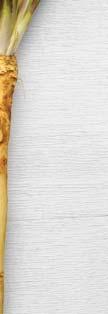
Horseradish


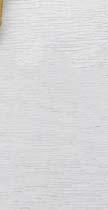






















Horseradish (maror) plays a starring role in the Pesach seder. It’s a member of the mustard plant family and has been used for thousands of years for nutritional and medicinal purposes.
Horseradish has only 6 calories per serving, no fat, and is high in fiber and protein. It also contains omega-3 and omega-6 fatty acids, which make it a great condiment to use on a diet!
Horseradish gets its pungent taste from the oils released during cutting. Finely grated horseradish is hotter than coarsely grated horseradish.
Glucosinolates, found in large amounts in horseradish, help the body detox from free radicals which can cause cancer.


In the American South, horseradish root was rubbed on the forehead to cure headaches. It stimulates increased blood flow which reduces inflammation.
Horseradish contains high levels of potassium which lowers blood pressure and can improve heart health.
Horseradish has antibacterial properties and can help rid the body of the bacteria that causes bronchitis.
Horseradish was first bottled and sold commercially in the mid-1800s, making it one of the first convenience foods.

www.KosherSpirit.com 5
KasheringCountertops forPesach
By Rabbi Shlomo Klein Rabbinic Coordinator at ~ Kosher
Countertops must either be kashered or covered for Pesach. If covering, one should make sure to use a non-porous material that will not easily rip or tear.
If kashering, one must first scrub the countertop clean. Then it should be left for 24 hours without anything hot being placed on it. Only after this, can one proceed with the kashering.
Care should be taken that the countertop is smooth and clean before kashering. Any countertop that has holes or scratches in which small particles of food can be trapped cannot be kashered and should instead be covered.
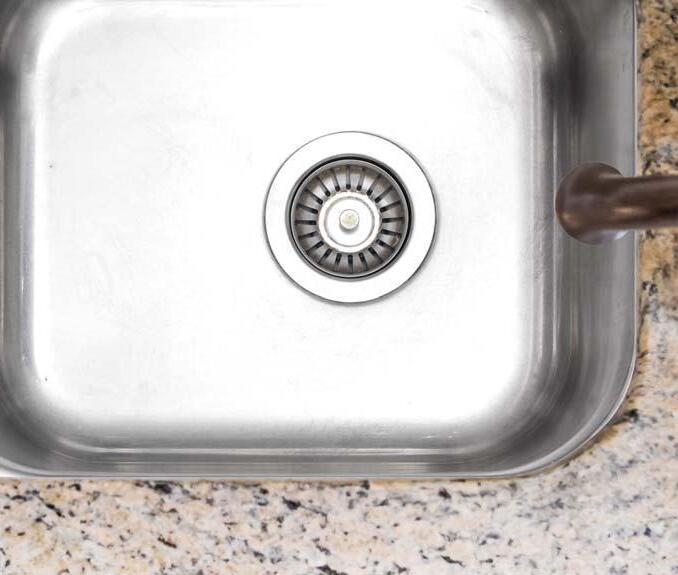
The standard procedure for kashering countertops is called “irui mayim roischin” which means,

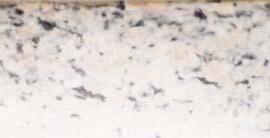













pot of water on the stove until it boils the water is poured onto the counter. Care should be taken that the boiling water is poured over the entire area of the counter and that there is a continuous flow of water from the pot to the surface (it is ideal to use a tea pot for kashering). If the counter is large, it may be kashered in stages. One would boil a pot of water and pour it on one portion of the counter and then repeat the process for the next portion, etc.
It is preferable to use an “even melubenes” (glowing stone) as well. One takes a stone and places it in a fire (or on the stove) until it is glowing hot. Then,
Your Kosher Kitchen
wwwww.www.OKOK. O org rg r
ovv-
“ “ppou ou i ri g ng boiling water”. ” The pot shoul u d be koossh
after pouring the boiling water on the counter, one takes the stone and uses it to cause the water to boil again after it is on the counter. Once again, care should be taken that the stone is used over the entire area of the counter. Although Shulchan Oruch refers to a stone, one can use any device that will accomplish the same goal of causing the water to boil again on the counter. A practical option is to use a clothing iron (unplug immediately before use for safety).
Can your countertop be kashered
QUARTZ: can be kashered according to most opinions



CORIAN: differing opinions; according to Rav Moshe Landau, it can be kashered

MARBLE: if smooth, it can be kashered
GRANITE: can be kashered
FORMICA/LAMINATE: cannot not be kashered for Pesach (see note below)


RECYCLED GLASS: cannot not be kashered for Pesach (see note below)
LAVA: glazed with enamel, cannot be kashered
RESIN: cannot be kashered for Pesach (see note below)
WOOD: can be kashered (if hard/smooth)

CERAMIC TILE: cannot be kashered
NEOLITH: this material is certified by the ~ for Passover when brand new; cannot be kashered





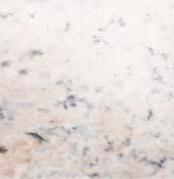





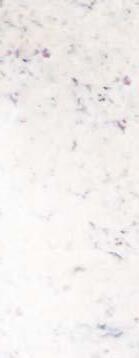
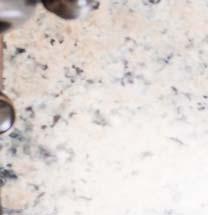










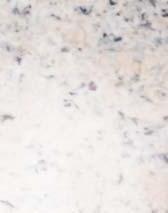

STAINLESS STEEL: can be kashered
CONCRETE: cannot be kashered


PORCELAIN: cannot be kashered

ENAMEL: cannot be kashered
SOAPSTONE: differing opinions; according to Rav Moshe Landau this can be kashered

CAESARSTONE: differing opinions; according to Rav Moshe Landau this can be kashered
Note regarding glass and plastic/resin based countertops: According to several Poskim these countertops can be kashered by repeating the kashering process 3 times.


ateer r he e he is s on o a arre e one ne f c chhan n e l ll l of f gaaiin n ron on e usse e
ז"ס 'יס ג"ח קחצי תחנמו ג"סק 'יס ב"ח בקעי תקלח ,ו"כ 'יס ט"ח רזעילא ץיצ ת"וש www.KosherSpirit.com 7
?
KEEPING KOSHER WHEN VEGAN
By Rabbi Yakov Teichman ~ Rabbinic Coordinator
GOING VEGAN IS ONE OF THE TOP CULINARY TRENDS OF 2018, FUELED BY BOTH HEALTH AND ECO CONSCIOUS MOTIVES, WITH APPROXIMATELY 6% OF AMERICANS CURRENTLY IDENTIFYING AS VEGAN.
Vegan food does not contain ANY animal products or byproducts, including meat, dairy, fish, eggs, and honey. Vegan consumer products are occupying more and more shelf space in retail stores and vegan restaurants are popping up all over the country.
For a kosher vegan, there are a good number of kosher certified retail food products, but vegan kosher restaurants are few and far between, leading many kosher observant Jews to wonder whether eating in a non-certified vegan restaurant is really such a big deal.
But, despite the limited palate of ingredients, many of
which are inherently kosher, there are many issues with a non-certified vegan restaurant.
The kosher diet has two main components – the food needs to be inherently kosher and it needs to be prepared in a kosher manner. The main components of a vegan diet are grains, nuts, seeds and produce, with produce posing a significant kashrus challenge.
What could possibly be wrong with vegetables? Depending on the item, growing location and season, vegetables can be infested with insects. According to halacha, one who consumes insects transgresses multiple sins. Some may say that a vegan restaurant would not serve insects because their consumption is contrary to vegan values; however, experience has shown that the restaurants are not concerned with the small insects commonly found on fruits and vegetables.
Another issue in a non-certified vegan restaurant is Bishul Akum – cooking done by a non-Jew. There are two conditions that make food cooked by a non-Jew prohibited: food that cannot be consumed raw AND is fit to be served to a king. Carrots would be an example of a food that is ed-
8 www.OK.org
ible raw. Many vegetables that are served at vegan establishments are edible raw, and of those that are not edible raw, some of them are not fit to be served at a king’s table. However, there are some that may be subject to the prohibition of Bishul Akum, like fancy potatoes, for example, and those would be prohibited. Grains and rice are also subject to the prohibition of Bishul Akum.
THESE THREE SIGNIFICANT ISSUES MAKE IT CLEAR THAT A VEGAN RESTAURANT CAN BE JUST AS COMPLEX AS A MEAT OR DAIRY RESTAURANT WHEN IT COMES TO KASHRUS AND A NON-CERTIFIED VEGAN RESTAURANT IS NOT PERMISSIBLE ACCORDING TO HALACHA.
A third issue is the equipment in the restaurant. Many restaurants buy used equipment, and it is actually the norm to purchase used equipment, rather than new, due to the great expense involved in purchasing brand new equipment. Obviously, with pre-owned equipment it is impossible to know the prior uses, which were probably non-kosher. There are those that would argue that, although the equipment was previously used for nonkosher, it is “eino ben yomo” (not used for 24 hours) and if the food has already been cooked it is permissible b’di’eved. But, this leniency does not account for the common occurrence of personal food brought in by kitchen staff and either cooked or warmed on the restaurant equipment. Sometimes this is done intentionally, and other times it is done due to staff not knowing or understanding the rules of the kitchen. With the frequency of personal food preparation in restaurant kitchens, it is not possible to rely on “eino ben yomo”.
These three significant issues make it clear that a vegan restaurant can be just as complex as a meat or dairy restaurant when it comes to kashrus and a noncertified vegan restaurant is not permissible according to halacha. A kosher certified establishment has a mashgiach, who diligently works to make sure mistakes don’t happen and constantly checks that all ingredients and preparation processes meet halachic kashrus requirements. For those who adhere to a vegan lifestyle, or enjoy vegan food, be sure to check for a reliable kosher certification before enjoying your meal. ~
THE “NEW” INSECT OBSESSION
Rabbi Sholom Kesselman ~ West Coast Field Representative
THE PURPOSE OF THIS ARTICLE IS TO BRING AWARENESS AND PROVIDE INFORMATION RELATING TO THIS TOPIC.
QUESTION: WHAT’S WITH THIS SEEMINGLY NEW FUSS PEOPLE ARE MAKING OVER INSECTS IN OUR PRODUCE? IS IT REALLY AN ISSUE? IF PREVIOUS GENERATIONS DIDN’T MAKE SUCH AN ISSUE OUT OF IT, WHY ARE WE? WHAT PRACTICALLY SHOULD BE DONE TO MAKE COMMON EVERYDAY PRODUCE KOSHER AND INSECT FREE?
ANSWER: As this topic requires an extensive answer, more than what this article can offer, I will keep the points brief and focus on the most essential parts.
The prohibition against eating insects is Min HaTorah (Biblical). If one eats an entire insect, even if it is less than a kezayis, he is punished with malkus (lashes). This applies to any insect that is visible to the naked eye. Insects that can only be seen under a microscope are not included in this prohibition.
The need to check fruits, vegetables, fish, and even water for insects is actually nothing new. The Gemara raises the issue in Maseches Chullin (67b) and the Shulchan Oruch devotes an entire siman (chapter) in Yoreh Dea’h (Si. 84) to it. The Pri Chadash actually writes: “I cannot contain myself from mentioning and making it known to the nation of Hashem regarding the severity of the
www.KosherSpirit.com 9
prohibition of tolaim (insects). It has become light in the eyes of people and once a person becomes accustomed to a certain transgression it becomes ‘permissible’ in their eyes. Even the Chachomim are not careful enough in this matter.”
Halacha requires us to check all fruits and vegetables where it would be normal to fi nd insects. Th is is not only when a majority of a given item is known to contain insects, but even when a decent minority (mi’ut ha’motzui) is known to have them. The basic rule of thumb is, if you wouldn’t be surprised to find an insect in it, it requires checking. There are different opinions as to what exactly is the minimum percentage. ~ Kosher has adopted the stricter opinion that if 10% of a portion of any given item contains insects, it is mi’ut ha’motzui and requires checking.
generations didn’t treat this issue as seriously as we do today, because then it was, in fact, less of an issue.
A common misconception is that insects are not an issue because even if there are a few inside the produce they would be botul b’shishim (nullified by a ratio of 1:60). This is not true, as bittul does not apply to an entire creature (a “berya’h”). If, however, one is making a smoothie or pureeing the fruits and vegetables in
Firstly, I would suggest downloading the ~ Kosher Vegetable Checking Guide, which can be downloaded FREE at http://www.ok.org/consumers/your-kosher-kitchen/ok-vegetable-food-checking-guide/ or in the iOS and Google Play stores. There you will find a detailed list of what needs checking and the correct methodology.
In short, here are some examples of everyday fruits and vegetables that require halachic checking for insects: artichokes, asparagus, basil, mint, broccoli, cabbage, cauliflower, celery, dill, kale, lettuce, parsley, cilantro, scallions, spinach, and strawberries.
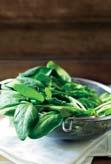
VEGETABLE CHECKING GUIDE
now used in place of the harsh ides previo s, resu l t i in cr ea se vel inse ation. Th


There are a number of factors that contribute to insect infestation; the two biggest are climate and use of pesticides. For this reason, not all produce is alike. Levels of infestation may vary country by country, or even state by state, depending on the climate and amounts of pesticides used. This is why we are seeing a recent renewed emphasis on this matter. The use of pesticides is on the decline due to new awareness of toxicity. Weaker and less potent chemicals are now used in place of the harsher pesticides of previous decades, resulting in an increase in the level of insect infestation. This may account for a big part of the reason why our parents’ and grandparents’
such a way that any insects would certainly be pulverized, a standard rinse would be sufficient and there would be no need to check for insects. After being crushed by the blender, any insects present would be botul b’shishim.
Bagged fresh salads (without a reliable hechsher) are also problematic even when the bag states “washed and ready for use”. Many consumers assume that the vegetables are washed satisfactorily and are free of insects, based on the quality control standards of the company. However, experience has proven that these bagged salads often contain insects as well. The standard of washing which the company requires is not the same as what halacha demands. What is considered “clean” with regard to food safety is halachically insufficient. For this reason, bagged greens still require checking for insects.
So, where does this leave us? What things need to be checked and how?
The wash and check system that ~ Kosher has adopted (after much testing and consulting with the top rabbinic authorities on this subject), which can be used for almost all fruits and vegetables, is called the “The Mesh Cloth System”. It allows you to check greater quantities of produce in a more time efficient manner. This is the system used in ~ certified facilities and it is what is recommended for home use, as well.
The following items are known to be extremely difficult to clean and for this reason they are not used in ~ certified facilities: blackberries, raspberries, mulberries, artichoke leaves, and asparagus heads (unless of course they have been pureed).
In the merit of our added care and attention to matters of kashrus, may we be zoche to the geulah shleima b’karov. ~
a
wh
en n
a g gr r an a d p pa a r re n
acco u
p h reas
hy y our p
ts s t ’
PUBLISHED
KOSHER CERTIFICATION 10 www.OK.org
BY ~
a closer look
YEAST
What is yeast?
Yeast is a microscopic fun- gus that metabolizes carbo- hydrates (sugars) into carbon dioxide gas and alcohols. It is used as a leavening agent in baking (carbohydrates turn into carbon dioxide and cause the dough to expand; the al- cohol evaporates during the baking process).
Yeast is also used in the fermentation of alcoholic beverages such as wine, beer and spirits (car- bohydrates turn into alcohol and the carbon dioxide bub- bles through the liquid and dissipates into the air) and nutritional supplements of(yeastisanexcellentsource protein and vitamins). Yeast can also be further processedintoyeastextract which is used as a food additive or for flavorings.
It’s important to note that many of the products thatyeastcontainyeastcanbemadewith whichisnaturallypresent in the environment, but since there are many strains of yeast results can be unpredictable. ducedTherefore,acommerciallyproyeast of the best strain for the specific application is typically used.
Rabbi Sholom Ber Hendel ~ Rabbinic Coordinator
How is yeast made?
A seed of yeast from the desired strain is fed with nu- trients that allow growth. Typically, the main nutrients are sugars; however, vitamins, minerals and otherareadditives added
emulsifier and dried carefully with hot air so the yeast re- mains active and sold as active dry yeast. Nutritional yeast is dried differently and the yeast deactivates in the process. Brewer’s yeast is yeast that was used in the beer making pro- cess and then dried; it is fre- quently used for yeast extract and nutritional benefits. Is yeast kosher?
as well. This process is known as fermentation. At the end of this process, the nutrients and water are removed from the yeast in a centrifuge and the resulting product is cream yeast. The cream yeast can be sold as is or used for further processing.
The cream yeast is dried by filtering moisture out and then it is compressed and sold as fresh yeast or mixed with
In the USA the sweeten- ers used for yeast productionaremostlymolassesand high fructose corn syrup (HFCS) and the main ko- sher concern is to make sure that they are transported toInthefacilityinkoshervessels. addition, other sweeten- ers as well as the vitamins and other additives must be kosher for the finishedproduct to be certified as kosher. Yeast made from wheat or barley based sweeteners is chometz, while corn based sweeteners make kitniyos yeast. Kosher for Passover yeast (used for wine and yeast extract) is usually made espe- cially for Passover, utilizing only molasses and additives that are kosher for Passover.
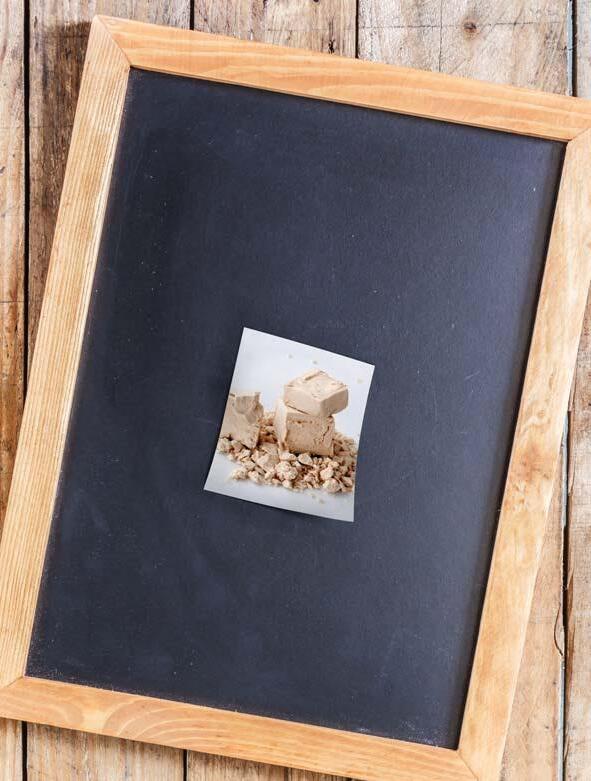
www.KosherSpirit.com 11
By Dina Fraenkel
Teaching Our Kids to Pitch-In!
The days and weeks leading up to Pesach are punctuated by the smell of Clorox and a slightly topsyturvy home. While the requirement to clean for Pesach only applies to removing chometz, many Jewish homes are in full “Spring Cleaning” mode during the weeks before Pesach. For those of us with children at home, pre-Pesach is an ideal time to solicit some hands on help from our kids and get them used to contributing to the household chores.
The Torah teaches us to educate every child according to his way, and this applies to practical matters, too. The

Gemara, in Kiddushin 29a, lists the obligations of a father to his child, including teaching him Torah, marrying him off, teaching him a trade, and teaching him to swim. Both the spiritual and physical are covered here, and both are regarded with importance.
Teaching a child to swim can be interpreted in the literal sense, but also more loosely, using the colloquial phrase, “sink or swim”. Practical skills and independence help our children swim through the tide of life, not sink and flounder with uncertainty.
12 www.OK.org
A 75-year (and counting) Harvard Grant study, running since 1938, identified two things necessary for success in life: LOVE and WORK ETHIC. The professionally successful subjects identified in the study all had the same response when asked what helped them develop work ethic. Each one said pitching in with age appropriate chores throughout their childhood taught them responsibility and accountability, which had a direct correlation to their present success.
As parents who want to foster healthy spiritual and physical development in our kids, it’s important to make sure we are teaching our kids the important skills needed to get there. Age appropriate chores not only help ease the burden of running the home, they enable kids to grow up and become conscientious, helpful and responsible adults – truly a gift to both our children and their future spouses and children! ~
Age-Appropriate chores for kids
Toddler (ages 2–3)
O Pick up/ put away toys
O Unload the dishwasher (silverware, plastic cups, tupperware)
O Dust with feather duster/microfiber rag
O Swiffer the floor
O Put clothes in the dirty clothes hamper
O Collect dirty clothes
O Help move clothes from washer to dryer
O Put clothes away
O Make bed
O Wipe cabinets
O Wipe baseboards (soapy water)
Preschooler (ages 4–5)
O Any previous chores
O Load the dishwasher
O Vacuum couch/ chairs/ cushions
O Take out recycling
O Set table
O Clear table
O Wash dishes (with supervision)
O Clean windows
O Wipe out bathroom sinks
O Match socks
O Fold dish towels
O Weed
O Water indoor plants
O Feed pets
Early Elementary (ages 6–8)
O Any previous chores
O Meal prep (wash produce, find ingredients, simple cutting)
O Wipe bathroom sinks, counters, toilets
O Hang out laundry
O Sweep
O Vacuum
O Collect garbage
O Get mail
O Fold/hang laundry
O Clean microwave
O Rake leaves
Elementary (ages 9–11)
O Any previous chores
O Make simple meals
O Take garbage/ recycling to the curb
O Wash/ dry clothes
O Clean toilets
O Mop floors
Middle School (ages 12–14)
O Any previous chores
O Clean tub/ shower
O Make full meals/ meal plan
O Clean out fridge/ freezer
O Mow yard
O Supervise younger children’s chores
You should take into account your child's specific abilities and maturity level when assigning chores. This is a list of possible chores that most children in each age group are able to do. You can select the number of chores that you feel is appropriate for your child.

©2013 TheHappyHousewife.com. All rights reserved. www.KosherSpirit.com 13
MAKING PESACHFun again!
Close your eyes and think back to Pesach when you were a child. Go ahead, I’ll wait. Your 8, 9, or 10 years old, and sitting at your Pesach Seder. What’s the first memory that pops into your head? Is it a happy one, or a meaningful one? Does Pesach make you think of spending quality time with your family? Perhaps you recall that fun trip you went on over Chol Hamoed every year?


 By Duby Litvin
By Duby Litvin
On the flip side, does a nervous and stressful memory come to mind? Remembering how nervous you felt when you had to recite the Ma Nishtana in front of everyone? Or, was your mother so frazzled that the kids knew to “stay away from Mom while she’s cleaning for Pesach?” Was it a time you enjoyed, or a time that was burdensome to everyone in your house?
For years, we’ve cleaned, shopped and cooked for Yom Tov, and as a society we have it down pat. We have it down to a system. One thing we’re still working on however is the fun side of the holiday. Yes, shocking, there is a fun side to the holiday! In fact, imbuing Pesach with a sense of fun and whimsy is just as important, if not more important that the elaborate menus and shopping lists. For one simple reason: When you closed your eyes just moments ago, that one memory which popped into your head is the whole purpose of Pesach. The entire Seder is structured so that the children will ask, engaging us so that we can pass down our heritage to our children. The entire point of the Seder is “lihagid” – to tell. We want our children to perk up, see what’s going on and inquire. We have the unique opportunity to create not just an evening where we get through the Hagaddah as fast as possible so that we can get to the chicken soup, but to create a lasting impression, an indelible mark left on our kids for years to come.
So how do we do that? How do we create this impactful impression on our children (and our guests as well!) so that they walk away from the table feeling inspired and excited?
14 www.OK.org
The Solution: Creating a Seder that is engaging, fun and exciting from beginning to end! This year, try scaling back the hours spent on the menu planning, and instead take time to plan the actual Seder evening, so that you have an organized and smooth Seder which leaves the participants with a positive, lasting impression. Below are a few ideas how to get started.
1 CREATE A SEDER TO YOUR SEDER
Create an actual schedule for the evening. The goal is to help you create a streamlined and smooth evening so you are calmer and more prepared, and not just “going with the flow.” Planning each step means scheduling when “Ma Nishtana will be said” and when “Soup will be served.” Preparing this schedule will help you keep things flowing, tell your children when they need to be at the table, and prevents the “how much longer until we are eating?” question.
Creating a “Seder” also means going through the Hagaddah ahead of time and making notes when certain songs will be sung, games will be played, and when various Torah soundbites will be discussed. Print out your “Seder to the Seder” and you can give a few of these to various older family members to help keep things moving throughout the evening.
2 CREATING AN ATMOSPHERE
The impression begins the minute people walk through the door. Have the table set, but give some thought as to how to kick it up a notch.
TABLESCAPES
Centerpieces are an easy way to create atmosphere for your Seder. For example, if you search: “Yam Suf centerpiece” you will see lots of images of people who re-created the Crossing of the Sea on their dining room table. You can decorate your Seder tables with a “theme.” You can do a jeweled theme, symbolizing how the Jews left Mitzrayim with great wealth, putting fake jewelry as your tablescape. Include props like toy frogs or other “themed” items by each person’s plate. There is also a minhag to put lots of silver items on the table to demonstrate our freedom.
PROPS
A good “prop” is the Mystery Box that can be used as a “Show and Tell” type item, and will also encourage discussions and questions. This box can be a centerpiece on your Pesach Seder table. (I give more detail to the Mystery Box below)
DRESS UP
Another good way to have people take notice right away is for the host or one of your family members to come to the Seder in costume. Dressing up like Moshe Rabbeinu, or even a frog, is sure to get people to ask questions. If the Seder leader is dressed as Moshe Rabbeinu, the entire Hagaddah can be told in a first -person story form.
3 GAMES & ACTIVITIES
On your “Seder to the Seder,” itemize where and when you want to have various games or activities throughout the evening. There are so many options for Seder games, you can search for ideas. Below are just a few of the many I have come across in my searches.
MYSTERY BOX
This idea originates from Rabbi Tzvi Freeman, senior editor at Chabad. org who gives a class on how to create a “Wacky and Wonderful Seder.” There are many variations how to use these Mystery Boxes. You can fill the box with “plagues,” or have random items and people have to connect the items to the story of Pesach somehow. You can use the box items as props as you tell the story of Pesach. A toy brick (block) symbolizing the bricks that the Jews built in Egypt, or perhaps a toy snake who can tell the tale of being turned into a staff and back into a snake again.
AFIKOMAN TREASURE HUNTS
Have everyone at your table split up in teams and hunt for the afikoman. This way everyone plays together. You can create clues that sends everyone hunting together as one group. There are many variation to this game as well since some have the minhag that children should not “steal” the afikoman.
Allow the kids to actually “leave Mitzrayim.” I’ve spoken to many families who do a version of this. At some point during Maggid they tie the Matzah on their backs/around their shoulders and lead the children around the house, out of Mitzrayim into the holy land! On the way, they do songs, cheers in praise of HaShem.
CHARADE TYPE GAMES
Your children can act out the 4 Son’s, different Makkos, or different people in the Hagaddah.
TRIVIA GAMES
To really get your children and guests involved, spend some time coming up with various trivia questions to ask throughout the evening. Trivia questions can be done in differing formats. Answer in the form of a question, fill
www.KosherSpirit.com 15
in the blank, true or false. Or flip the game, and have the children play “Stump the Daddy/ Rabbi / Leader.” If they can ask a hard enough question that the host doesn’t know the answer, they get a prize!
(For a more complete list, check out my new Pesach Seder Fun section in my 2017 edition of my book: Duby’s Pesach Lists)
4 INTERACTIVE DISCUSSIONS
Keep Torah discussions to sound bites, short and sweet. Work to create more discussion rather than one person giving a speech.
To do this, come up with “questions” posed to the people at the table who need to contribute to the discussion as a whole.
HERE ARE SOME IDEAS FOR INTERACTIVE DISCUSSIONS:
“modern Ma Nishtana”
What are things that plague us today?
In what way did we leave our own personal Egypt this year?
What enslaves a person today in society?
What does true freedom mean?
You can center your discussions around a certain theme each year. Matzah is referred to as bread of healing. Perhaps a theme can be about “healing this year.” How can we heal – physical health – emotional health – heal our relationships – heal our communities, and if you
PesachNotes! Pesach Notes!
want to get political, how can we heal our country? (Although I don’t recommend getting too political at the table lest your guests pick up and leave!)
5 TRADITIONS
Traditions are my favorite part of any holiday, even Pesach! It can be as simple as having a special food for the Seder night, or that special “chometz” party on the night of Bedikas Chometz, or going on a specific trip over Chol Hamoed. It doesn’t have to be big and expensive, it’s about creating that tradition for your children to connect with Yom Tov. When they think of the Yom Tov, a positive and loving response will be elicited. The traditions are just a way to solidify it.
SOME EXAMPLES OF TRADITIONS:
A special menu item that the family feels it’s just not Pesach without! In our family, my mother in law makes a special blended vegetable soup, known as “Orange Soup”. It is just not Pesach unless we have that part of our menu.
How your family sings the Ma Nishtana can be also be a tradition. Every year, my cousin will say the Ma Nishtana in Sign Language!
Chol Hamoed trips – amusement parks, arcade centers, parks for a Pesach BBQ, or having family picture day. These are the things that your family will look forward to doing every year. ~
I would be remiss if I didn’t discuss my favorite – Pesach Notes. On Motzei Pesach every year, we sit down and write all the funny things that happened over the holiday, as well as predictions for the coming year. We pack them away with our Pesach boxes and look forward to reading them the following year when we unpack the Pesach boxes.
Regardless of the tradition, be it big or small, the goal is for it to become a treasured sacred activity that your family will come to cherish and look forward to all year long.
The ideas above are just a drop in the bucket of what one can do to help enhance your family’s Seder experience. Whatever you choose to do to create a more fun Pesach experience, remember that it should be enjoyable, and not to add extra stress. This will help our families enjoy Pesach and see it for the joyous Yom Tov it truly is. Wishing you a kosher, fun and freilichen Pesach!
Duby Litvin has been writing lists since she learned to hold a pen. In 2014, she created Duby’s Pesach Lists, a guide filled with every list imaginable to help you get organized for Pesach. When The Lists went viral, Duby's life changed forever as she became an authority on Pesach planning. Duby lives in Louisville KY with her husband Shmully, and when she is not making lists, she owns a small kosher bakery and dabbles in writing childrens’ literature. Connect with Duby by emailing her at MrsDuby@gmail.com or stalking her on Facebook.
16 www.OK.org
Fudgy Chocolate Bundt Cake with Coffee Glaze

My friend Melinda Strauss is an expert at baking gluten free and paleo, and she kindly volunteered to create the perfect Bundt cake for my book. Batch after batch of Bundt cakes emerged from my oven, until we finally had one that had everyone saying, “This is Pesach cake?!”
by Naomi Nachman @NaomiNachman
www.KosherSpirit.com 17 RECIPE
White Wine & Citrus Roasted Chicken
I learned this technique from a recipe in Susie Fishbein’s Kosher by Design Brings It Home. Cooking the chicken covered allows it to cook through; then the basting gets it deeply caramelized and so delicious. The citrus adds brightness and freshness, cutting the sweetness for a really well-balanced dish. The flavors here may seem sophisticated, but rest assured that even the pickiest kids asked for seconds!

byMiriam P a s c
l kooCemitrevO@ 18 www.OK.org
a
Fudgy Chocolate
Bundt Cake with Coffee Glaze
Reproduced from Perfect for Pesach by Naomi Nachman with permission from the copyright holders ArtScroll/ Mesorah Publications, LTD
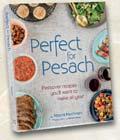

Pareve
Freezer friendly
Fudgy Chocolate Bundt Cake
Ingredients
2½ cups almond flour
1 cup cocoa powder
½ cup potato starch
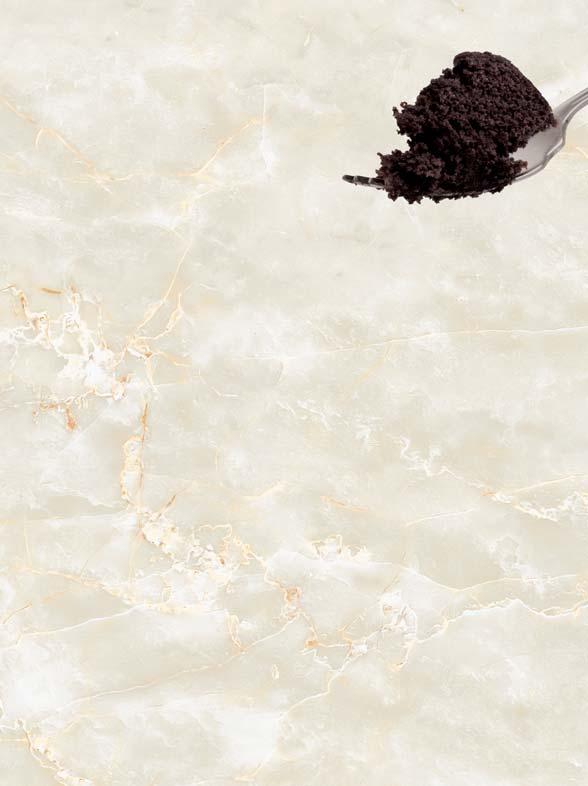
1 Tablespoon instant coffee granules
1½ teaspoons baking powder
½ teaspoon kosher salt
1½ cups sugar
½ cup oil
1 Tablespoon imitation vanilla extract
6 eggs
1. Preheat oven to 350°F. Grease a Bundt pan well; set aside.
2. In a small bowl, whisk together almond flour, cocoa powder, potato starch, coffee, baking powder, and salt. Set aside.
3. In a separate bowl, whisk together sugar, oil, vanilla, and eggs. Add dry ingredients; stir to combine.
4. Pour batter into Bundt pan; bake 40-45 minutes, until toothpick inserted into the center comes out clean. Set aside to cool completely in the pan. Remove from pan; glaze with Coffee Glaze, below.
Coffee Glaze
Ingredients
1 cup powdered sugar
1 Tablespoon brewed coffee
1 teaspoon oil
1. In a small bowl, whisk together all ingredients to form a glaze. If the glaze is too thick to pour, add water, one teaspoon at a time, until desired texture is reached.
2. Pour glaze over cooled cake.
White Wine & Citrus
Roasted Chicken
Reproduced from Real Life Kosher Cooking by Miriam Pascal with permission from the copyright holders ArtScroll/Mesorah Publications, LTD.
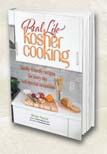

Meat
Yields 6-8 servings
8 pieces bone-in, skin-on chicken (tops or bottoms) juice of ½ small grapefruit juice of ½ lemon juice of 1 small orange juice of 1 lime
¼ cup semi-sweet white wine
¼ cup honey
1 teaspoon dried parsley OR 1 Tablespoon fresh chopped parsley
1 teaspoon kosher salt
¼ teaspoon black pepper
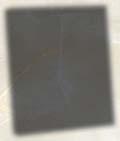
1. Preheat oven to 350°F.
2. Place chicken into a large pan. Cover pan tightly; bake for 30 minutes.
3. Meanwhile, whisk together remaining ingredients until smooth.
4. After 30 minutes, raise oven temperature to 450°F.
5. Uncover pan; pour citrus mixture over the chicken. Cook for about 40 minutes, basting every 10 minutes, until the chicken is cooked through and the tops are browned and caramelized.
Plan Ahead: This chicken is best the day it’s made, but it can be frozen. Reheat, uncovered, until warmed through.
ke k www.KosherSpirit.com 19
WHO’S BEHIND THE ~
BEHIND
Interview with Rabbi Osher Gutnick
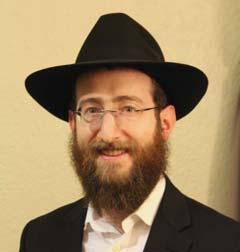
KS: Where did you grow up? Where did you go to yeshiva?
ROG: I grew up in Melbourne, Australia, where I attended Yeshivah College and Yeshivah Gedolah. I continued my rabbinic studies at the Rabbinical College of America in Morristown, NJ, followed by a year of shlichus in Tel Aviv, where I studied and mentored students at a Chabad yeshiva that catered to baalei teshuvah. I received my semicha from Rabbi Mordechai Shmuel Ashkenazi z”l, after studying at Yeshiva Beis Menachem in New Jersey and the Central Lubavitch Yeshiva in Crown Heights.
KS: What did you do after yeshiva?
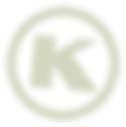
ROG: After concluding my yeshiva studies, I married my wife Esther and continued rabbinic studies in kollel. I also worked part time as a writer and editor for non-profit Jewish organizations, as well as doing occasional hashgacha work.
KS: What is your current position at the ~?
ROG: I’m a Rabbinic Assistant and Europe coordinator at ~ headquarters. I work closely with Rabbi Shimon Lasker, the head Rabbinic Coordinator of the ~ Europe office in




Brussels, Belgium to ensure that the ~’s kashrus activities in Europe are aligned with headquarters.
KS: What prepared you the most for your current position at the ~?
ROG: I grew up in a kashrus oriented home; my father is a Rav HaMachshir and I accompanied him on many of his kosher audits growing up. I worked periodically as a mashgiach for my father in Melbourne and later in the United States for other hechsherim. While studying in kollel, I was introduced to Rabbi Yitzchak Hanoka, the ~ Rabbinic Coordinator for the Tri-State Area, who graciously introduced me to the ~ family. I also accompanied him on his annual kosher audits. He gave me invaluable guidance on many practical aspects of kosher certification, and I began working as an ~ mashgiach. Soon after that, Rabbi Levi Marmulszteyn, Rabbinic Manager at ~ headquarters, informed me that a job opportunity had come up in the headquarters office and I transitioned to my current position as a Rabbinic Assistant.
KS: What is best thing about working at the ~?
ROG: The office is a robust working environment, staffed by a very diverse range of experts. I’m learning something
~
MEET OUR STAFF:
Rabbi Osher Gutnick
20 www.OK.org
new every day. To work in kashrus is a great privilege and responsibility. It involves close personal collaboration - not just with our own offices and field reps, but also with the companies we certify and other kosher agencies. Ultimately, we’re working for a higher cause. We work for kosher because companies demand kosher, because their distributors demand kosher, because consumers demand kosher, because the Eibishter demands kosher. It’s a bit like Chad Gadya.
KS: How would you describe the ~ today?
ROG: I would describe it as the vanguard of the kashrus world. Food technology is constantly evolving, and companies are finding new ways to save production costs, often posing significant kashrus challenges. The ~ is fortunate to have a large and knowledgeable pool of Rabbinic Coordinators and field representatives throughout the world to ensure that the ~ remains abreast of the latest production developments. Not long ago our office was approached by a French company that sells recycled water recovered from slaughterhouses. They collect water used to wash down live animal trucks and abattoir floors, and after an intensive filtration and chemical process they sell it as pure, potable water, indistinguishable from fresh water. We could not approve it as kosher due to the origin, but it goes to show the lengths to which some companies will go nowadays to utilize every possible resource.
KS: Can you share an interesting experience that you had while working at the ~?
ROG: I have recently started making more inspections at various facilities around the globe. Last month I had the opportunity to conduct a kosher inspection in Mexico, were I learned the importance of being accompanied by somebody with local knowledge. A representative from the company was driving me and we stopped at a dimly lit gas station, where some locals were offering to wash our car for a nominal fee. My companion politely declined their offer but it seemed they had other things in mind. After a tense exchange of words, he gave them a few pesos and we sped off. When I asked him what happened, he said, “They told me that if they couldn’t give me a car wash they would be more than happy to “take
What Other People Say
Rabbi Osher Gutnick
“ Reb Osher's background of kashrus experience in Australia made him a natural for the ~.” His thoroughness, perseverance and amicable nature make him a pleasure to work with.”
Rabbi Don Yoel Levy
Kashrus Administrator
“ Rabbi Gutnick possesses the unique combination of being talmid chacham while also being an organized facilitator and clear communicator. I remember him, while still in yeshiva, accompanying his father, a kosher administrator for a local kashrus agency in Australia, on kosher conferences. He is especially liked for his refined and courteous personality, another quality which makes him a perfect fit to assist Rabbi Lasker in coordinating the European Department of ~ Kosher.”
Rabbi Eli Lando
~ Chief Operations Executive
“ Rabbi Gutnick’s easy personality and ability to simplify complex issues are the reasons that customers and mashgichim alike enjoy working with him. His attention to detail and especially to the customer’s overall needs while ensuring the integrity of the kosher system setup is constantly apparent. Rabbi Lasker and the entire ~ depend on him with confidence.”
Rabbi Levi Marmulszteyn
Rabbinic Manager
“ Rabbi Gutnick possesses two very important qualities – understanding and practicality. Every task that is assigned to him is done well, and done in a way that is sensitive to the needs of the customer and consumer. He has a talent for clear, concise communication with both rabbonim and customers. Rabbi Gutnick is a pleasure to work with and I am blessed to have real peace of mind knowing he is handling things along with me.”
Rabbi Shimon Lasker
~
Europe Rabbinic Coordinator
“
“
www.KosherSpirit.com 21
care” of my car some other way!” Thank G-d no vehicles were harmed, the inspection itself was successful, and the company is now ~ certified.
Why Do We Make Kiddush Right Away at the Seder?
One year, upon arriving home from shul on the first night of Pesach, the Shpoler Zeida’s son announced in the customary niggun, “Kadesh: Ven der tatte kumt aheim fun shul macht er bald kiddush” (Kadesh: When father comes home from shul on Pesach, he recites Kiddush right away). The Shpoler Zeide asked him why, but the boy replied that this was all his melamed had taught him. The Shpoler Zeide then told him the explanation that needs to be added, “kdei di kinder zollen nit ainshloffen un freggen di Mah Nishtana” (so that the children will not fall asleep and will ask the four questions).”
At the Yom Tov seuda the next day, the Shpoler Zeide asked his son’s melamed why he had not taught the reason for Kadesh, as this has been the minhag since the distant past. “I didn’t think it was necessary to teach this to small children, especially since this reason isn’t so important, for making Kiddush early applies to everyone, even if there are no small children at home.” The Shpoler Zeide strongly protested, “How dare you say that this reason is unimportant? Are you wiser than the melamdim of previous generations? You simply don’t begin to understand why they taught in this way. Don’t ever change their minhagim according to what you consider logical!”

The Shpoler Zeide then went on to explain that the words contain great secrets: “On the night of the seder, our Father, Hashem, comes home from shul where he has seen that although the Yidden are exhausted from the laborious preparations for Pesach,
they have nevertheless come to daven, and sing Hallel to Hashem with their whole hearts. Seeing this, Hashem has to ‘recite kiddush right away’, to renew his kiddushin with his kallah and take the Yidden out of golus. He must do this without delay. Why?
“So that his little children, the Yidden, will not fall asleep in golus and despair of ever being redeemed. So ‘they will be able to ask the Mah Nishtana’, why is this night, this long golus, different from all other nights? It is being prolonged more than any other golus that we have endured!” With these words, the Shpoler Zeide broke out in tears and lifted his hands, crying out, “Hashem! Redeem us from golus while our hearts are still awake, and do not let us fall into a deep slumber!”
All present were roused with feelings of teshuvah, and some even fell to the floor, quietly sobbing. But their Rebbe soon revitalized them, “It is time to gladden our Father and show him that his young son can dance even in the ‘dark’!” The tzaddik directed his chassidim to begin a lebedike niggun, and together they danced with great simcha.
(361’
Reprinted with permission from Lma’an Yishme’u www.lmaanyishmeu.com
CHASSIDIC INSIGHTS 22 www.OK.org
ירופיס
ע ,םידעומ ןיוז םידיסח
)
The Bread of Affliction
The opening line of Maggid is “Hei lachma anya… (The Bread of Affliction eaten by our ancestors...)” The Aramaic phrase “di achalu avhasana” conventionally translated as “eaten by our ancestors” can also be interpreted as meaning, “which ate our ancestors”. In Kabbalah, “avos” also refers to a person’s intellect, because intellectual understanding creates love and fear of G-d. The afflictions of Golus cloud our ability to understand and concentrate on spiritual matters. – Rabbi Yosef Y. Schneersohn, the Sixth Lubavitcher Rebbe
SOUl NuTRition
By Rabbi Chaim Fogelman
Geulah and Golus
Along the same vein as the previous thought, after reciting Shema in Shacharis we say, “V’yatziv, v’nachon, v’kayam… (True and certain, established and enduring…)” These 15 expressions of praise are only recited in the morning, because the morning is compared to Geulah, when we will have clarity. In the evening, we say, “V’emunah kol zos (And belief is all this…)” Nighttime is compared to Golus and in the time of spiritual concealment all we can rely on is our simple faith in Hashem.
Seeing the Best in the One You Love Experiencing Joy on Pesach
Reb Levi Yitzchok of Berditchev gives a Chassidic explanation of two of the names of Passover: Pesach and Chag HaMatzos. The Jews call the holiday Pesach, praising G-d for passing over the Jewish homes in Egypt. G-d, through the Torah, calls the holiday The Feast of Matzos in celebration of the self-sacrifice of the Jews who left Egypt without even taking the time to prepare food for the journey!
The Lubavitcher Rebbe often said that Pesach should not be burdensome and we should not do work that is not necessary and causes strife in the name of “Pesach cleaning”. He said, “In the spiritual realms, the Divine Presence rejoices on Pesach. This happiness should be reflected in our hearts.”
www.KosherSpirit.com 23
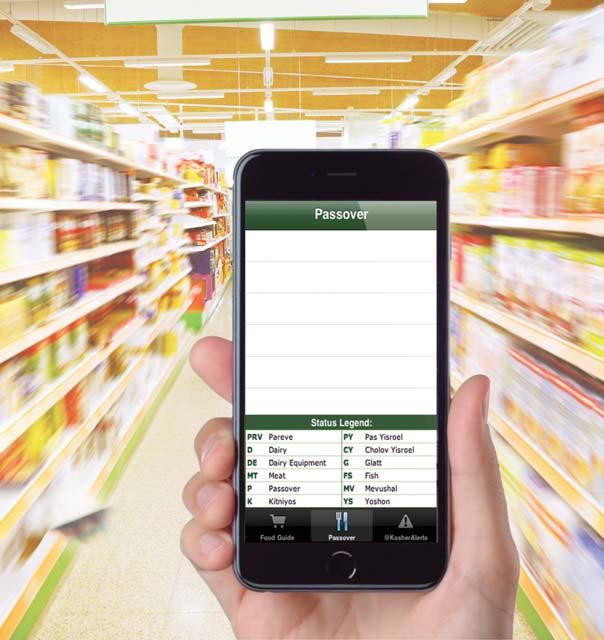
Download the Kosher Food Guide app and get the most updated list of the Kosher for Passover products that ~ Kosher certifies. It’s like having a rabbi at your side whenever you go shopping... Is it Kosher for Pesach? KOSHER CERTIFICATION ~ Kosher Spirit, 391 Troy Avenue • Brooklyn, NY 11213 718-756-7500 • info@ok.org • www.ok.org follow us on Twitter @KosherAlerts For the latest in Kosher news: follow us on Facebook facebook.com/okkosher
wishes for a Kosher and Freilichen Pesach from ~ Kosher Certification Search OK Kosher in the App Store or Google Play store. Search “OK Kosher” on the App Store & Google Play to find our apps
Best






















































































